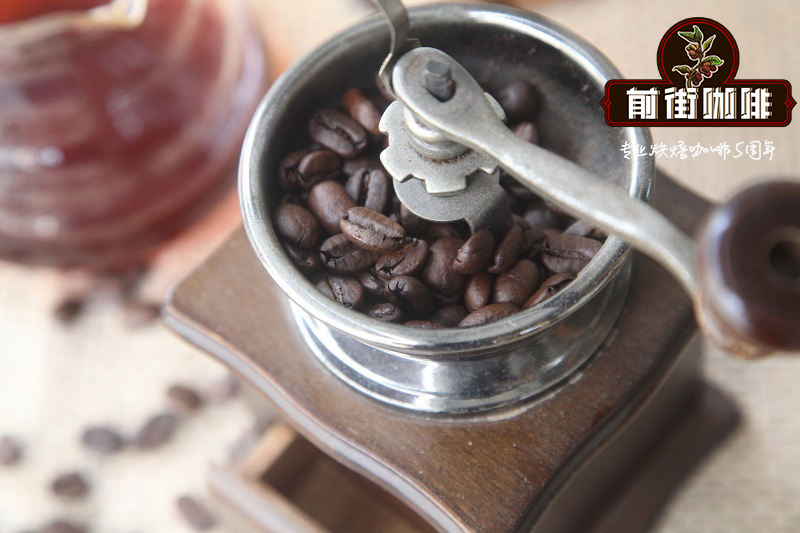Costa rica salaca estate virasaki coffee bean varieties and origin flavor trend?
Treatment of Velassa odd red honey in Salaka Manor of Costa Rican breeze treatment plant

Flavor description: honey sweet, orange, grapefruit, sweet spices, green apples,
Rich sweet and sour taste, smooth taste
Producing area: Zarcero area of western valley (West Valley)
Producer: Finca Salaca Manor Saraca
Treatment plant: breeze treatment plant (Monte Brisas)
Variety: Verassa odd species (Villa Sarchi)
Altitude: average 1750 m
Grade: Nbig A
Treatment: red honey treatment
Harvest time: NumberA
Certification: NCMA
Introduction:
Finca Salaca, which is now owned by the Maria Elena family, is almost
All Villalobos species are cultivated, while the Verassa odd species (Villa Sarchi) are derived from the ancient bourbon.
A natural mutant of Bourbon, which has long adapted to the climate of Orange County, Costa Rica.
It is a kind of coffee with high complexity in smell. Villalobos is a branch of Tibica.
Its main feature is its delicate appearance, and the coffee flavor is like flowers and citrus.
And rich in subtle acidity like apricots, peaches and plums. Between 1950 and 1960s, Costa Rica
A large number of Villalobos species were planted in the western valley, and up to now, there is still a large part of Villalobos.
It is planted at such a high altitude as the western valley. In the late 1960s, Dutch traders will
Villalobos was introduced into Indonesia for planting.
The batch that produced Villa Sarchi, which originated from the ancient bourbon
A natural mutant of Bourbon, which has long adapted to the climate of Orange County, Costa Rica.
It is a coffee with high complexity in smell, suitable for City (urban-moderate) and Full City.
(city-medium depth) baked, ground dry powder with aromas of perfume and nectar and cherries
Mixed with sweet spices like cinnamon twigs, it will smell like fennel if it is re-baked. City baking
The front segment has sharp acidity like lemon, bright micro-caramel, sweet cherry and some micro-wheat aroma.
Then slowly seep out in the back, endless aftertaste; Full City baking is like plum plum peel.
The sour flavor of the fruit is mixed with bitter cocoa, heavy cream and taffy, sour and sweet.
The heat rushes out together, and when cooled, it will appear with the smell of sweet flowers and citrus.
Coffee oil with a strong dark chocolate flavor is an extremely delicate coffee.
Flavor features: grass, cream, nuts, caramel, sweet and sour balance, dark chocolate.
Costa Rican coffee cultivation was introduced from Cuba in 1779 and exported for the first time in 1820.
There are about 32000 coffee farmers, with an average planting area of less than one hectare (10000 hectares) per farmer.
Costa Rica has a population of 41 billion (2006), with a coffee planting area of 82500 hectares and annual production.
1.7 million bags (60kgs per bag), with an annual domestic consumption of 380000 bags, with an average annual consumption of 5.5kgs per national
It is higher than Japan's (consumption of 4kgs), and the average Taiwanese are only slightly higher than 1kg.
Costa Rica is the country where coffee was first introduced into Central America. It has a long history and is self-produced by coffee organizations.
Until the sales system is complete. Because it is located in the Central American Gorge, there are many volcanoes in the territory, which has the natural advantages of sunshine and land.
The climate is reconciled by Pacific and Atlantic currents and sea breezes at the same time, and the coffee produced is local.
Due to the characteristics of micro-climate and local conditions, Costa Rican coffee has always been recognized by the world in terms of quality and quantity.
Rated as one of the world-class high-quality coffee. Costa Rican coffee has been grown for 200 years.
Originally planted on the slopes of Poas and Barva volcanoes, it is now known as the Central Valley (Central Valley).
The seven main coffee producing areas are from northwest to southeast, along with the inland central plateau.
The Costa Rican volcanic terrain has fertile volcanic ash, mild and suitable temperatures, and stable and abundant rainfall.
It is one of the reasons why coffee has become one of the main agricultural products in Colombia. The seven major producing areas are: Tarrzu,
Tres Rios 、 Orosi 、 Central Valley 、 West Valley 、 Turrialba 、 Brunca .
Important Notice :
前街咖啡 FrontStreet Coffee has moved to new addredd:
FrontStreet Coffee Address: 315,Donghua East Road,GuangZhou
Tel:020 38364473
- Prev

Is the producing area and flavor of Diamond Hill coffee beans good in Tara Pearl, Costa Rica?
Costa Rica Tara Zhu production area Diamond Mountain extremely hard beans washing flavor description: baked almonds, cream, baked toast, sweet sugar, solid taste, overall balance. Country: Costa Rica (Costa Rica) producing areas: Tarrazu, Dota Valley Manor: Diamond Hill Manor (Finca Montanas del Diamante) varieties
- Next

What is the treatment of white honey in Delia Manor in Herba processing Plant, Costa Rica? How to drink?
Description of Verasa strange white honey flavor in Delia Manor, Costa Rica: lemon aroma, jasmine, plum, sweet peach, roasted almonds, cashew nuts, delicate acidity, soft taste and delicate sweetness. award record: in 2016, Herbacher processing Plant of COE Cup in Costa Rica won the batch of newly cultivated SL28 varieties in 2015.
Related
- Detailed explanation of Jadeite planting Land in Panamanian Jadeite Manor introduction to the grading system of Jadeite competitive bidding, Red bid, Green bid and Rose Summer
- Story of Coffee planting in Brenka region of Costa Rica Stonehenge Manor anaerobic heavy honey treatment of flavor mouth
- What's on the barrel of Blue Mountain Coffee beans?
- Can American coffee also pull flowers? How to use hot American style to pull out a good-looking pattern?
- Can you make a cold extract with coffee beans? What is the right proportion for cold-extracted coffee formula?
- Indonesian PWN Gold Mandrine Coffee Origin Features Flavor How to Chong? Mandolin coffee is American.
- A brief introduction to the flavor characteristics of Brazilian yellow bourbon coffee beans
- What is the effect of different water quality on the flavor of cold-extracted coffee? What kind of water is best for brewing coffee?
- Why do you think of Rose Summer whenever you mention Panamanian coffee?
- Introduction to the characteristics of authentic blue mountain coffee bean producing areas? What is the CIB Coffee Authority in Jamaica?

